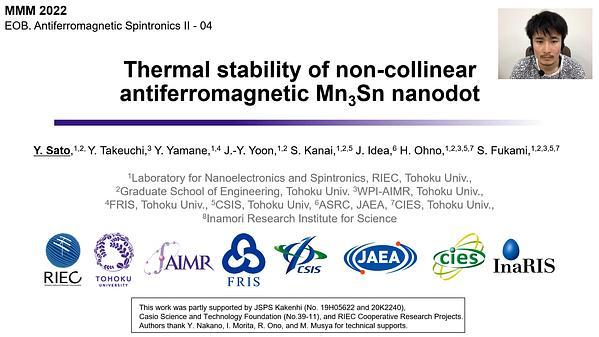
Premium content
Access to this content requires a subscription. You must be a premium user to view this content.

technical paper
Fabrication of Co25Fe75/Hf multilayer thin films to decrease the magnetic damping coefficient
In magnonic and spintronic devices, a low magnitude magnetic damping is desired for efficient operation via the long-range propagation of spin waves 1. However, thin magnetic ferrite films (low damping but insulating) may not suffice if a charge current is needed 2. Thin films of the conducting binary alloy of cobalt and iron (Co25Fe75) have exhibited low damping (~10-3) 3. To further decrease the damping of this system, a multilayer film consisting of ten 10 nm layers of Co25Fe75 alternated with 2 nm layers of hafnium (Hf) is proposed. This structure would decrease the damping by preventing eddy current losses and decrease coercivity and magnetic saturation via smaller crystallite sizes 4,5. These single and multilayer films were deposited via sputtering, with thicknesses (t) of 10, 50, and 100 nm. The ferromagnetic resonance (FMR) of the films showed as the t increases, at a constant frequency (17 GHz shown), the FMR field decreases and linewidth increases, but the 100 nm multilayered film maintains the linewidth and FMR field of the 10 nm film (Fig. 1). The linewidth and FMR for each film (at 14-17 GHz) in addition to the saturation magnetization were used to calculate the damping parameter (α) of each film. This showed that as t increases up to 100 nm, the damping increases from ~1x10-2 (10 and 50 nm) to ~8x10-2 (100 nm) (Fig. 2). The damping of the multilayered film (~5x10-3) is below that of the 10 nm film, an order of magnitude improvement. This work shows that increasing t for single layered Co25Fe75 decreases FMR field, increases linewidth, and increases damping. The multilayer structure shows the ability to tune the FMR and damping. This provides avenues for other heterostructures, including the use of an insulating interlayer or other magnetic materials.
References:
1 H. Glowinski, F. Lisiecki, P. Kuswik, J. Alloys Compd., 785, 891-896 (2019).
2 E. Edwards, H. Nembach, and J. Shaw, Phys. Rev. Appl., 11, 054036 (2019).
3 R. Weber, D. Han, I. Boventer, J. Phys. D: Appl. Phys., 52, 325001 (2019)
4 S. Balaji and M. Kostylev, J. Appl. Phys., 121, 123906 (2017).
5 L. Garten, M. Staruch, K. Bussmann, ACS Appl. Mater. Interfaces, 14, 25701-25709 (2022).

Fig. 1. FMR measurements of the CoFe films at 17 GHz, showing a decrease in FMR field and increase in linewidth as thickness increases, and the multilayer sample returns to the FMR and linewidth of the 10 nm film.

Fig. 2. Calculated damping parameters of the CoFe films, showing that the multilayered film damping (0.0055) is comparable to a typical low damping value of CoFe (0.005) 3.

